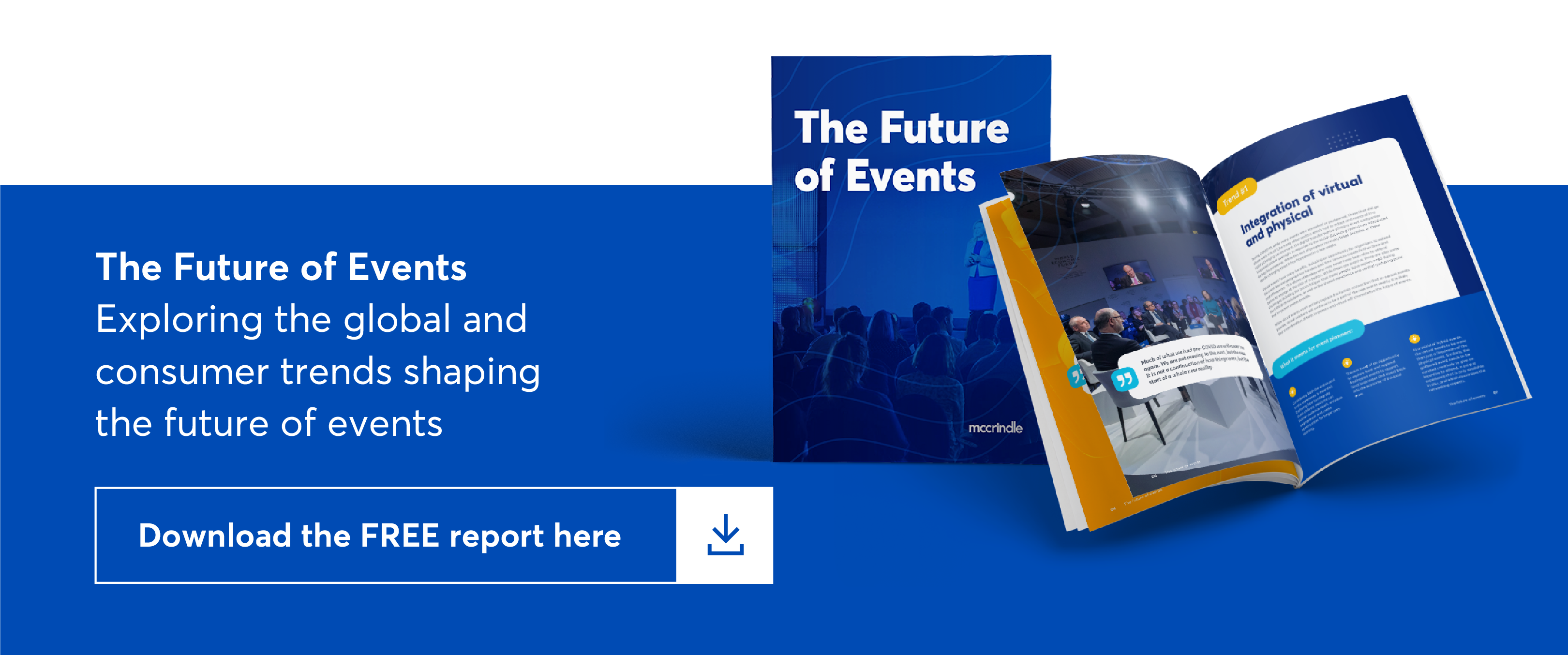Three tips for hosting a great virtual event

Virtual events have many benefits – like the cost savings, the fact that attendees who might not have been able to attend in-person are able to engage at the click of a button and the ability to expand the reach of the event.
With these benefits come some challenges, including what is commonly known as ‘zoom fatigue’, the lack of a shared experience and central gathering point that live events provide.
While virtual events won’t entirely replace the human connection that in-person events facilitate, virtual solutions will continue to be a part of the new events reality. It is likely that a combination of both in-person and virtual will characterise the future of events.
So, what is important for you to keep in mind when planning your next virtual event?
1. Be mindful of the program
At a live event, there is an unwritten social contract which effectively makes people sit up and listen to the speaker (or at least, pretend to!). At a virtual event, where people are tuning in from home, they could be doing anything from hanging up the washing or making a cup of coffee – let alone flicking through numerous other browsers. Therefore, be mindful of how you craft your program. In our experience, virtual event programs should be shorter than those of in-person events. A 45-minute live presentation could easily be cut down to 20 minutes or even 15 minutes in a virtual event. Break up the content by using polls or other interactive methods. Get creative with the program but keep it short and succinct.
2. Work on the set up
There is a lot of grace when it comes to live events. If the technology isn’t working, you can get the MC to fill the time, run an activity or simply let attendees talk amongst themselves. In a virtual event, this flexibility is lost, and so taking the time to get the set up right is well worth the investment. Think about the platform you are hosting the event on, test the technology beforehand and have a back up plan. The set up of speakers is also worth being aware of in terms of camera quality, lighting and sound. The better this all is, the better experience event attendees will have.
3. Give more energy
When delivering a presentation to a live audience, most presenters will unconsciously give extra energy. They will consider the feedback from the audience in real time and adjust their delivery accordingly. How different it is when you are presenting to a screen, where often you can’t even see the attendees faces if they have their camera turned off or you are sharing slides. Therefore, by default, virtual presenters should give 10% more energy in their delivery. While it might feel over the top, just give it a try without the extra energy and you will soon notice how much it is needed to engage the audience and make your virtual event a success.




